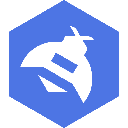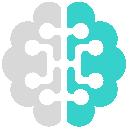-
 Bitcoin
Bitcoin $94,890.4974
1.90% -
 Ethereum
Ethereum $1,802.6452
2.97% -
 Tether USDt
Tether USDt $1.0005
0.01% -
 XRP
XRP $2.1925
0.72% -
 BNB
BNB $602.7125
0.38% -
 Solana
Solana $151.7122
0.22% -
 USDC
USDC $0.9999
0.00% -
 Dogecoin
Dogecoin $0.1867
4.19% -
 Cardano
Cardano $0.7227
2.04% -
 TRON
TRON $0.2433
-0.11% -
 Sui
Sui $3.6217
9.21% -
 Chainlink
Chainlink $15.1335
1.92% -
 Avalanche
Avalanche $22.7201
3.68% -
 Stellar
Stellar $0.2899
5.12% -
 Shiba Inu
Shiba Inu $0.0...01464
6.34% -
 UNUS SED LEO
UNUS SED LEO $9.1367
-0.74% -
 Hedera
Hedera $0.1959
5.59% -
 Toncoin
Toncoin $3.2490
2.20% -
 Bitcoin Cash
Bitcoin Cash $372.8996
5.82% -
 Polkadot
Polkadot $4.3172
1.51% -
 Litecoin
Litecoin $87.8114
5.33% -
 Hyperliquid
Hyperliquid $18.4204
-0.57% -
 Dai
Dai $0.9999
-0.01% -
 Bitget Token
Bitget Token $4.4463
0.82% -
 Ethena USDe
Ethena USDe $0.9997
0.02% -
 Pi
Pi $0.6527
0.01% -
 Monero
Monero $228.9974
0.41% -
 Pepe
Pepe $0.0...09542
10.30% -
 Uniswap
Uniswap $5.9754
4.12% -
 Aptos
Aptos $5.5833
4.04%
Short-term skills for spot currency speculation
Spot currency speculation requires an understanding of order types, leverage, the order book, slippage, and spread for successful trading.
Jan 09, 2025 at 10:30 am
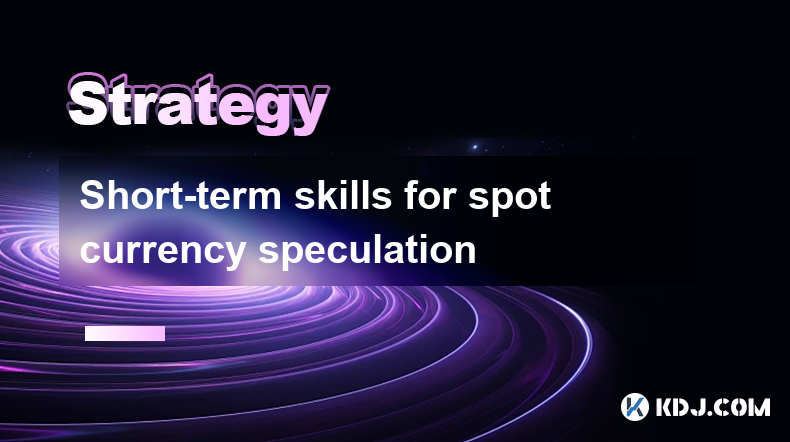
Key Points:
- Understanding the basic concepts of spot currency speculation
- Developing a trading strategy and risk management plan
- Identifying trading opportunities and executing trades
- Evaluating trade performance and making adjustments
Short-Term Skills for Spot Currency Speculation
1. Understand the Basics of Spot Currency Speculation
Spot currency speculation involves buying and selling cryptocurrencies for immediate delivery (spot), with the aim of profiting from price fluctuations. In contrast to futures or options trading, spot trading settles transactions promptly, typically within a few hours or less.
To grasp the fundamentals of spot currency speculation, you should familiarize yourself with key concepts such as:
- Order types: Market, limit, stop-limit, and others
- Leverage: Borrowing funds to amplify potential profits and losses
- Order book: A list of buy and sell orders at various price levels
- Slippage: The difference between the intended trade price and the price at which it executes
- Spread: The difference between the buy and sell price of a cryptocurrency
2. Develop a Trading Strategy and Risk Management Plan
A well-defined trading strategy and risk management plan are essential for successful spot currency speculation. Your strategy should outline:
- Market analysis: Technical and fundamental analysis techniques to identify potential trading opportunities
- Trade entry and exit criteria: Rules for determining when to enter and exit trades
- Position sizing: The amount of capital allocated to each trade
Your risk management plan should address:
- Stop-loss orders: Automated orders to limit losses in the event of adverse price movements
- Trailing stop-loss orders: Dynamic stop-loss orders that adjust to favorable price changes
- Position diversification: Spreading capital across multiple trades to reduce overall risk
- Risk-to-reward ratio: The potential reward relative to the potential loss for each trade
3. Identify Trading Opportunities and Execute Trades
Trading opportunities can be identified using various technical and fundamental analysis techniques. Common indicators include:
- Moving averages: Trailing averages of past prices to smooth out market fluctuations
- Momentum indicators: Measures the rate of change in price to identify trends
- Volume indicators: Indicators that assess the amount of trading activity
- Support and resistance levels: Key price levels that have historically acted as barriers to price movements
Once you have identified a trading opportunity, you should execute your trades promptly using an appropriate order type. Consider the impact of slippage and order priority when placing your orders.
4. Evaluate Trade Performance and Make Adjustments
Regularly evaluate the performance of your trades to identify areas for improvement. Measure your win rate, average profit, and drawdown (maximum loss). Analyze the accuracy of your market analysis and trading decisions.
Based on your evaluation, make adjustments to your trading strategy as needed. Adjust your entry and exit criteria, position sizing, or risk management techniques. Continuously seek to improve your trading skills and knowledge.
FAQs
Q: What is the difference between spot and futures trading?
A: Spot trading involves buying and selling cryptocurrencies for immediate delivery, while futures trading involves contracts to buy or sell at a specified price on a future date.
Q: What is leverage, and how does it work in spot currency speculation?
A: Leverage allows traders to borrow funds to increase their potential profits and losses. By using leverage, traders can control a larger position with a smaller amount of capital.
Q: How can I mitigate the risks involved in spot currency speculation?
A: Implement a comprehensive risk management plan that includes stop-loss orders, trailing stop-loss orders, position diversification, and risk-to-reward ratios.
Q: What are some common mistakes to avoid in spot currency speculation?
A: Overtrading, failing to manage risk, chasing losses, and relying solely on emotions in decision-making.
Q: What is the best strategy for spot currency speculation?
A: There is no one-size-fits-all strategy for spot currency speculation. The most effective strategy depends on your individual risk tolerance, trading style, and market conditions.
Disclaimer:info@kdj.com
The information provided is not trading advice. kdj.com does not assume any responsibility for any investments made based on the information provided in this article. Cryptocurrencies are highly volatile and it is highly recommended that you invest with caution after thorough research!
If you believe that the content used on this website infringes your copyright, please contact us immediately (info@kdj.com) and we will delete it promptly.
- Cardano (ADA) Price Eyes a Massive Bull Run Amid Looming Supply Squeeze
- 2025-04-26 12:05:13
- Is the crypto market chasing noise, or finally ready to reward substance?
- 2025-04-26 12:05:13
- CoinFerenceX, the world's first decentralized Web3 conference, is back in Dubai on April 28, 2025
- 2025-04-26 12:00:26
- Optimism (OP) price prediction 2025-2031: Can OP reach $10?
- 2025-04-26 12:00:26
- Stacks (STX) Price Surges by 16% but Underlying Market Sentiment Suggests a Correction May Be on the Horizon
- 2025-04-26 11:55:13
- Circle firmly denies rumors suggesting it plans to apply for a US banking license
- 2025-04-26 11:55:13
Related knowledge

What does the surge in SOL's cross-chain bridge inflows represent?
Apr 25,2025 at 09:00am
The recent surge in SOL's cross-chain bridge inflows represents a significant trend within the cryptocurrency ecosystem, particularly for Solana (SOL). This phenomenon highlights increased activity and interest in moving assets from other blockchains to Solana, indicating growing confidence in its network and ecosystem. Cross-chain bridges are essential...

Is the increase in LINK's net outflow from exchanges a positive signal?
Apr 24,2025 at 02:35pm
The recent increase in LINK's net outflow from exchanges has sparked discussions within the cryptocurrency community about its implications for the token's future performance. LINK, the native token of the Chainlink decentralized oracle network, has seen a notable shift in its net outflow from exchanges, which many interpret as a positive signal. This a...

Is LTC's UTXO age distribution useful for judging buying and selling points?
Apr 23,2025 at 05:42pm
Is LTC's UTXO age distribution useful for judging buying and selling points? Understanding the UTXO (Unspent Transaction Output) age distribution of Litecoin (LTC) can provide valuable insights into the behavior of its holders and potentially help in making informed decisions about buying and selling points. The UTXO age distribution refers to the age o...
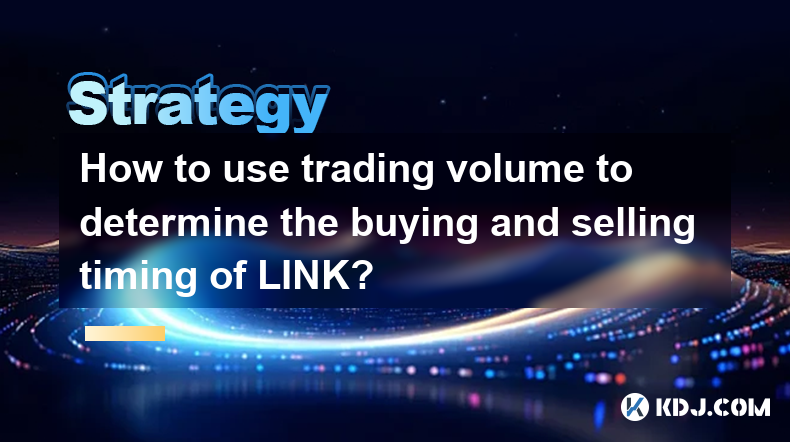
How to use trading volume to determine the buying and selling timing of LINK?
Apr 25,2025 at 02:07am
How to Use Trading Volume to Determine the Buying and Selling Timing of LINK? Trading volume is a crucial metric in the cryptocurrency market that can provide valuable insights into the buying and selling behavior of traders. When it comes to Chainlink (LINK), understanding how to analyze trading volume can help you make more informed decisions about wh...
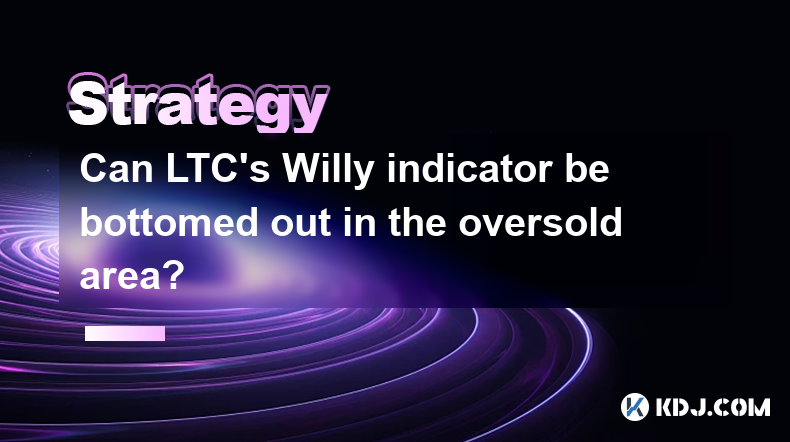
Can LTC's Willy indicator be bottomed out in the oversold area?
Apr 24,2025 at 01:43pm
Understanding the Willy IndicatorThe Willy indicator, also known as the Willy ratio, is a technical analysis tool used in the cryptocurrency market to gauge the sentiment of a particular asset, in this case, Litecoin (LTC). It is calculated by dividing the total trading volume of an asset by its market capitalization. The resulting ratio helps traders u...

Can XRP add positions when it falls back after breaking through the 200-day moving average?
Apr 25,2025 at 04:49pm
The question of whether to add positions to XRP after it breaks through the 200-day moving average and subsequently falls back is a common dilemma faced by many cryptocurrency traders. The 200-day moving average is a widely recognized technical indicator used to assess the long-term trend of an asset. When XRP breaks above this level, it is often seen a...

What does the surge in SOL's cross-chain bridge inflows represent?
Apr 25,2025 at 09:00am
The recent surge in SOL's cross-chain bridge inflows represents a significant trend within the cryptocurrency ecosystem, particularly for Solana (SOL). This phenomenon highlights increased activity and interest in moving assets from other blockchains to Solana, indicating growing confidence in its network and ecosystem. Cross-chain bridges are essential...

Is the increase in LINK's net outflow from exchanges a positive signal?
Apr 24,2025 at 02:35pm
The recent increase in LINK's net outflow from exchanges has sparked discussions within the cryptocurrency community about its implications for the token's future performance. LINK, the native token of the Chainlink decentralized oracle network, has seen a notable shift in its net outflow from exchanges, which many interpret as a positive signal. This a...

Is LTC's UTXO age distribution useful for judging buying and selling points?
Apr 23,2025 at 05:42pm
Is LTC's UTXO age distribution useful for judging buying and selling points? Understanding the UTXO (Unspent Transaction Output) age distribution of Litecoin (LTC) can provide valuable insights into the behavior of its holders and potentially help in making informed decisions about buying and selling points. The UTXO age distribution refers to the age o...

How to use trading volume to determine the buying and selling timing of LINK?
Apr 25,2025 at 02:07am
How to Use Trading Volume to Determine the Buying and Selling Timing of LINK? Trading volume is a crucial metric in the cryptocurrency market that can provide valuable insights into the buying and selling behavior of traders. When it comes to Chainlink (LINK), understanding how to analyze trading volume can help you make more informed decisions about wh...

Can LTC's Willy indicator be bottomed out in the oversold area?
Apr 24,2025 at 01:43pm
Understanding the Willy IndicatorThe Willy indicator, also known as the Willy ratio, is a technical analysis tool used in the cryptocurrency market to gauge the sentiment of a particular asset, in this case, Litecoin (LTC). It is calculated by dividing the total trading volume of an asset by its market capitalization. The resulting ratio helps traders u...

Can XRP add positions when it falls back after breaking through the 200-day moving average?
Apr 25,2025 at 04:49pm
The question of whether to add positions to XRP after it breaks through the 200-day moving average and subsequently falls back is a common dilemma faced by many cryptocurrency traders. The 200-day moving average is a widely recognized technical indicator used to assess the long-term trend of an asset. When XRP breaks above this level, it is often seen a...
See all articles






















![Trading is to follow [Review Video] Gold Bitcoin Crude Oil Orders Make Profits! Trading is to follow [Review Video] Gold Bitcoin Crude Oil Orders Make Profits!](/uploads/2025/04/26/cryptocurrencies-news/videos/trading-follow-review-video-gold-bitcoin-crude-oil-profits/image-1.webp)
























































